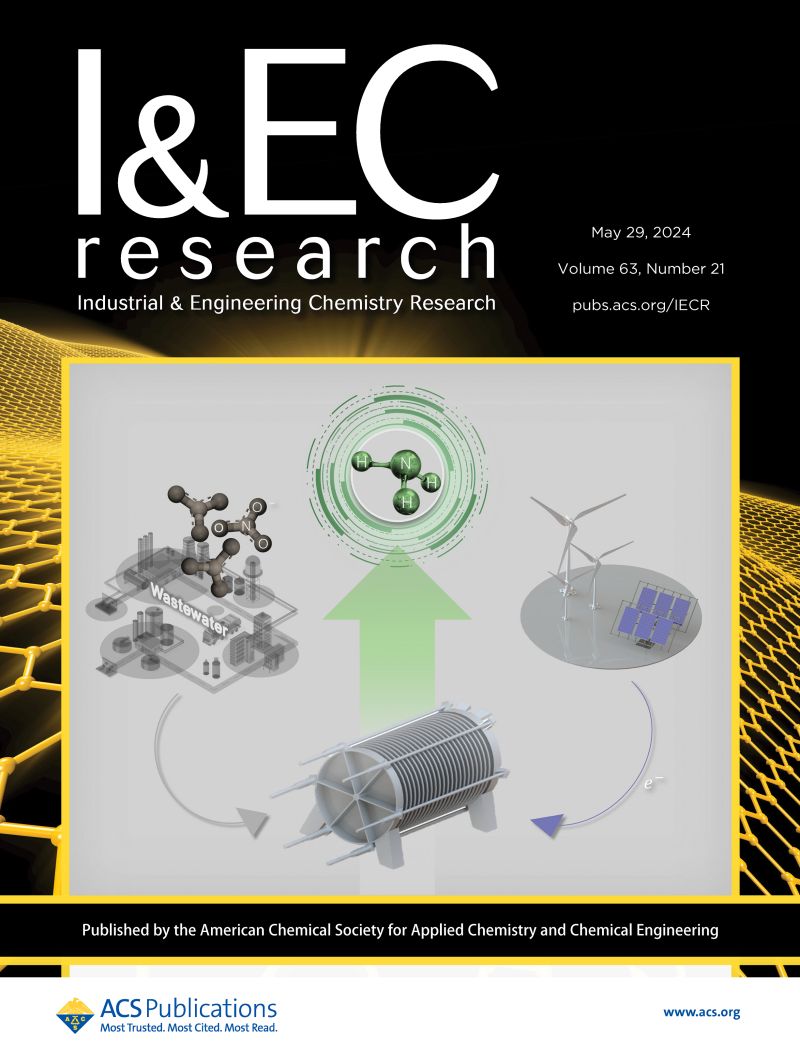溶剂蒸发诱导相分离和离子液体固定化对刚果红吸附的醋酸纤维素微球孔隙调节
IF 3.8
3区 工程技术
Q2 ENGINEERING, CHEMICAL
引用次数: 0
摘要
具有可调多孔结构的聚合物微球的开发对于分离应用是至关重要的,但也是具有挑战性的。本文以二氯甲烷(DCM)为成孔剂,通过溶剂蒸发诱导相分离技术合成了具有可调节孔隙度的醋酸纤维素(CA)微球。CA和DCM之间的温度诱导相分离实现了结构控制,通过改变DCM浓度(10-40% w/v),可以产生无孔、多孔、大孔或大孔结构。孔隙度从0%增加到30.5%,孔径范围为0 ~ 30 μm。甲基咪唑离子液体功能化CA微球(CA- il)具有快速吸附刚果红(30 min内达到平衡)、高容量(90.08 mg/g)和在7个循环中保持85%的效率。固定床实验证实了CA-IL在离子交换色谱中的实用性。这项工作为设计具有定制结构和功能的多孔聚合物提供了一种可扩展的策略,解决了分离科学中的挑战。CA微球的可调结构、可回收性和吸附性能突出了其在废水处理和色谱过程中的潜力。本文章由计算机程序翻译,如有差异,请以英文原文为准。

Pore Regulation of Cellulose Acetate Microspheres by Solvent Evaporation-Induced Phase Separation and Immobilization by Ionic Liquids for Congo Red Adsorption
The development of polymeric microspheres with tunable porous structures is crucial yet challenging for separation applications. Herein, cellulose acetate (CA) microspheres with adjustable porosity are synthesized via a solvent evaporation-induced phase separation technique using dichloromethane (DCM) as a porogen. Temperature-induced phase separation between CA and DCM enables structural control, yielding non-porous, porous, macroporous, or large-hole configurations by varying DCM concentration (10–40% w/v). Porosity increases from 0% to 30.5%, with pore sizes ranging up to 0∼30 μm. Methylimidazolium ionic-liquid-functionalized CA microspheres (CA-IL) exhibit rapid Congo red adsorption (equilibrium in 30 min), high capacity (90.08 mg/g), and 85% efficiency retention over seven cycles. Fixed-bed experiments confirm CA-IL’s practicality for ion-exchange chromatography. This work provides a scalable strategy to design porous polymers with tailored structures and functionalities, addressing challenges in separation science. The tunable architecture, recyclability, and adsorption performance of CA microspheres highlight their potential in wastewater treatment and chromatographic processes.
求助全文
通过发布文献求助,成功后即可免费获取论文全文。
去求助
来源期刊

Industrial & Engineering Chemistry Research
工程技术-工程:化工
CiteScore
7.40
自引率
7.10%
发文量
1467
审稿时长
2.8 months
期刊介绍:
ndustrial & Engineering Chemistry, with variations in title and format, has been published since 1909 by the American Chemical Society. Industrial & Engineering Chemistry Research is a weekly publication that reports industrial and academic research in the broad fields of applied chemistry and chemical engineering with special focus on fundamentals, processes, and products.
 求助内容:
求助内容: 应助结果提醒方式:
应助结果提醒方式:


